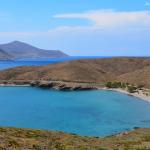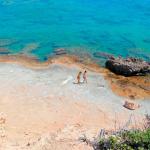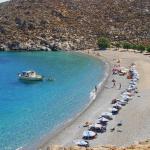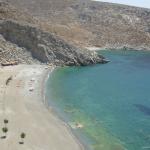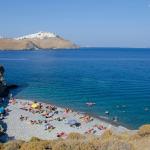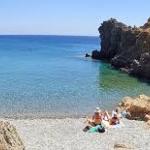
In the middle of the Aegean Sea, surrounded by the blue color of the sea until the end of the horizon, Astypalea appears, with its characteristic shape of a butterfly. Located between the Dodecanese and the Cyclades islands, it belongs to the first administratively but has close ties, geographically and culturally to the former. It is an island of unique and untouched natural beauty, with diverse and rare flora and fauna, rich tradition and history, and an impressive shoreline.
The impressive capital of the island, Chora, is the first thing that the visitor sees reaching the island by boat. Built on a high rock which is almost covered by the small whitewashed houses with the small blue windows surrounding the castle and its churches. Certainly one of the most beautiful capitals of the Aegean!
Astypalaia has a rich and interesting history, since it is inhabited since the prehistorical years with influences from the civilizations that have made their passage still obvious to the monuments of the island. During the Hellenistic era, it was a port of the Ptolemies and became known as "Ichthyoessa" literally meaning "the one that has fish", thanks to the generous fish catch that fishermen enjoyed, a trait that is still true today. In 1204 the island came under the rule of the Venetians, who were the masters until 1537, with a short break in which it belonged to Byzantine empire.
It was during that period that the most outstanding attraction of the island was built, the impressive Venetian castle that dominates the landscape at the capital. Inside the castle, there are two churches, the Virgin Mary of the Castle and St. George, with bell towers of exceptional beauty and architecture. Since then, Astypalaia followed the history of the rest of the Dodecanese, was conquered by the Turks in 1537, and it remained under their control until 1912, when Italy seized control of the islands. It wasn't until 1948, that after a short German and British occupation, Astypalaia was united with mother Greece.
Besides the remarkable castle, another landmark of the island is the group of the eight windmills on the central square of Chora. They are restored and well preserved, with some of them still featuring their fans and cloths while others remain active, acting as offices for the municipality or the festival. You should also visit the impressive Virgin Mary "Portaitissa", the most important religious monument of the island, with its history spanning over three centuries and an impressive bell tower and chancel. If find yourself in Astypalea at the 15th of August, you should definately visit the church and attend the big festival with violins and lutes.
Apart from sightseeing, the unique terrain of the island creates literally dozens of bays and coves that are home to many small beaches. Make sure you rent a vehicle and explore them all. After your swim, you will easily find yourself in one of the small fishing villages to refresh yourself with a cold beer and taste some of the local fresh fishfood. Authentic Greek summer at its finest!


